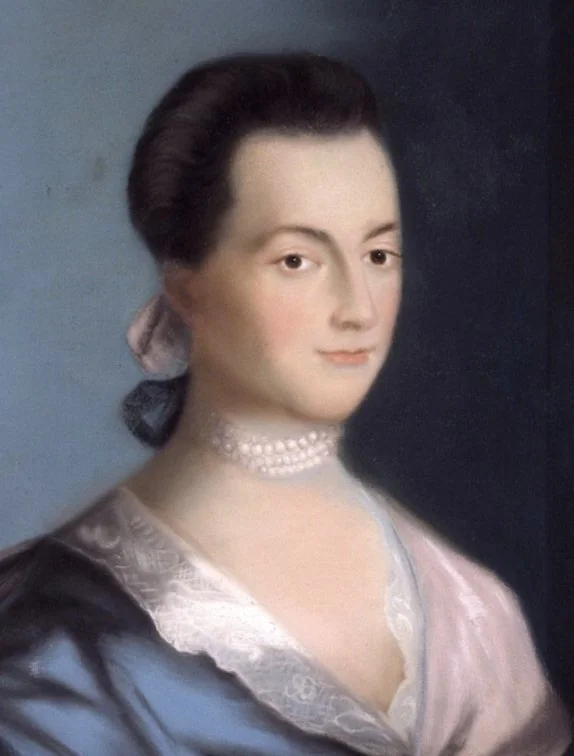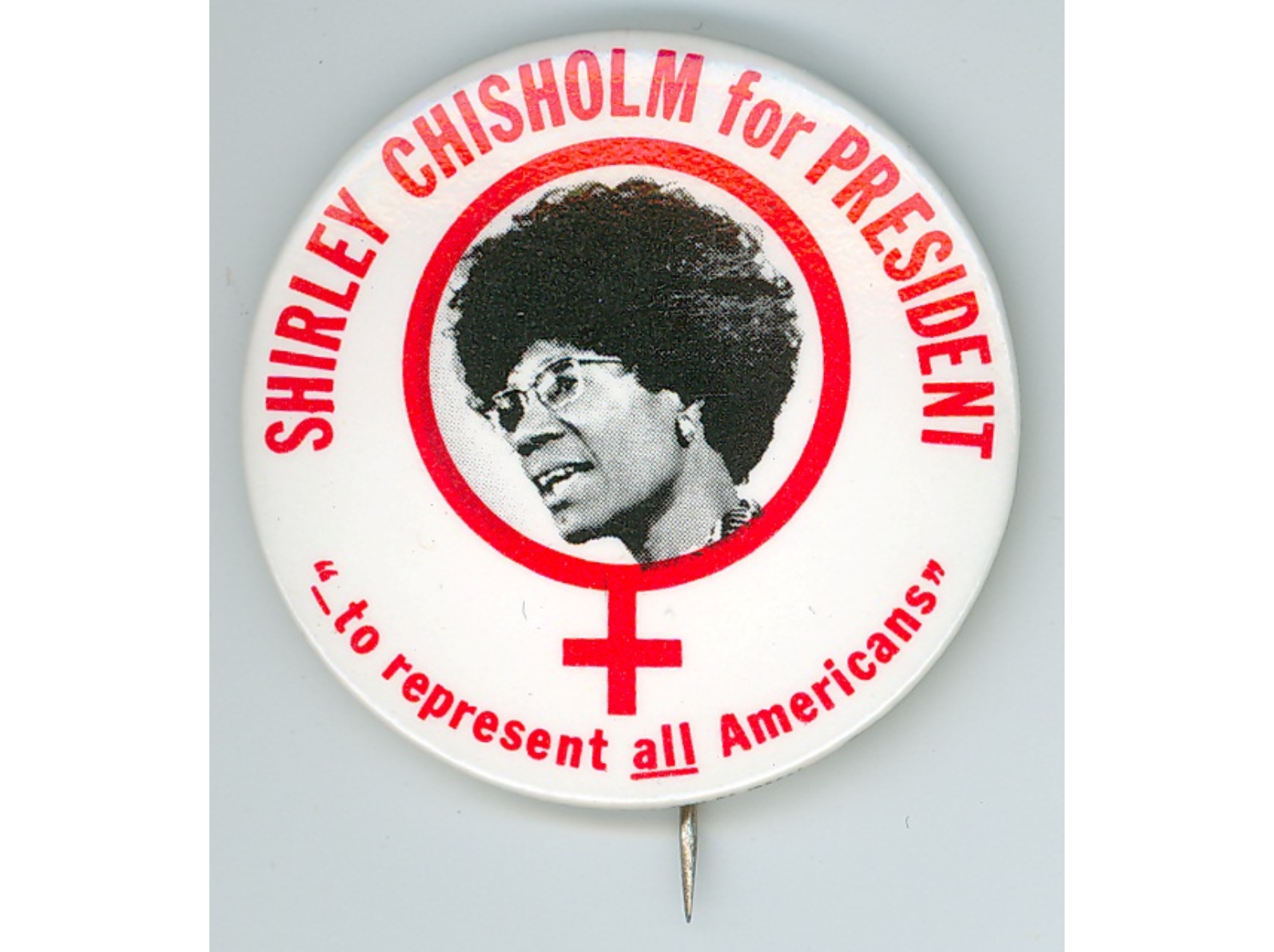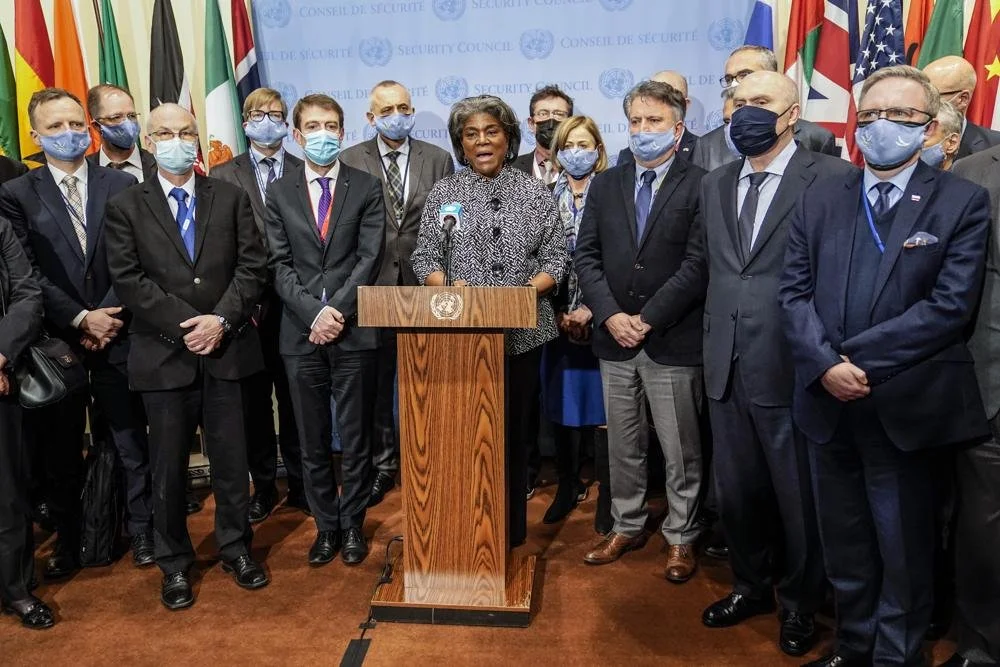The Executive Branch: The President & Vice President
The White House’s Forgotten Ladies
Before the Declaration of Independence was written in 1776, Abigail Adams, the wife of one of the powerful signers warned her husband to “remember the ladies.”
Portrait of Abigail Adams by Benjamin Blyth, 1766
“I long to hear that you have declared an independency. And, by the way, in the new code of laws which I suppose it will be necessary for you to make, I desire you would remember the ladies and be more generous and favorable to them than your ancestors. Do not put such unlimited power into the hands of the husbands. Remember, all men would be tyrants if they could. If particular care and attention is not paid to the ladies, we are determined to foment a rebellion, and will not hold ourselves bound by any laws in which we have no voice or representation.”
Abigail Adams wrote these words months before the Declaration of Independence was signed. It would be twelve years before the Constitution was ratified in 1789, and another two years before the Bill of Rights was ratified and included, in 1791.
“The ladies” were indeed forgotten. In fact, a married woman in the new republic, under the rules of coverture, could not own property, bring lawsuits, testify in court, enter into contracts, independently inherit property or assets, manage her children’s assets in the event of their father’s death, keep her own income (should she work), or write her own will.
First Female Presidential Candidates in the late 1800s. Though jokes as candidates, they advanced the cause for Women’s Suffrage.
Nearly 100 years later, Victoria Woodhull ran for President in 1872, becoming the first woman to do so. In 1884, attorney Belva Ann Bennett Lockwood ran for President with a female running mate, Marietta Stow.
Major Party Female Nominees for POTUS would not be seen until the modern Women’s Movement nearly 100 years later.
Margaret Chase Smith campaign poster in 1964
Shirley Chisholm campaign button in 1972
Margaret Chase Smith campaign poster in 1964. Shirley Chisholm campaign button in 1972
It would be 92 more years before the US would see the first female candidate for the nomination of one of the major parties. In 1964, Margaret Chase Smith, who served nine years in the House of Representatives, and 24 years as a US Senator (becoming the first woman to serve in both houses of Congress) was placed in nomination at the Republican Party’s convention. In 1972, Shirley Chisolm became the first black woman candidate for a major party’s presidential nominee, receiving 430,000 votes in the primary that year.
The new Millennium saw renewed female Presidential runs, in both major parties.
Primary bids were also made by Carol Mosely Braun (D) in 2004, Michele Bachmann (R) in 2012, Carly Fiorina (R) in 2016.
Women joined major tickets as running mates, hoping to be VEEP.
Vice Presidential candidates in the modern era include Geraldine Ferraro, who was Walter Mondale’s running mate in 1984, and Sarah Palin, who was Senator John McCain’s running mate in 2008.
First Female Major Party Nominee – Sen Hillary Rodham Clinton 2016.
Hillary Rodham Clinton broke a significant glass ceiling by becoming the Democratic Party Nominee for President in 2016, with Sen.Tim Kaine as her running mate. First Lady for 8 years, Senator from New York, Secretary of State logging more miles in international visits than any previous Secretary of State, Secretary Clinton received a majority of the popular vote in 2016, but lost the electoral college to Donald Trump.
2019 showed more female candidates for the White House than in any previous race.
(L to R) Sen Elizabeth Warren (D/MA), Sen Kamala Harris (D/CA), Sen Amy Klobuchar (D/MI), Rep Tulsi Gabbard (D/HI), Author Marianne Williamson (D), Sen Kirsten Gillibrand (D/NY). (Photos by Justin Sullivan and Bill Pugliano/Getty Images. Compilation Pew Research Ctr.)
In 2019, six Democratic women began campaigns for the Presidency: Sen. Elizabeth Warren, Sen. Amy Klobuchar, Sen. Kamala Harris, Rep. Tulsi Gabbard, Sen. Kirsten Gillibrand, and author Marianne Williamson. By early 2020, Joe Biden jumped ahead of them to the top of the Democratic ticket, and won the Presidency by 7 million votes, becoming the 46th President of the United States.
Since George Washington rode atop a white horse and refused the title “King” in favor of President, the United States has had 46 male Presidents.
Only one woman has gotten close.
Vice President Kamala Harris.
Joe Biden chose as his running mate California Senator Kamala Harris. In 2020, Kamala Harris made history as the first woman to be elected Vice President of the United States. VP Harris further made history by being the first Asian-American and the first African American woman to serve in the White House at this level.
Since John Adams served as George Washington’s VP in 1791, there have been 49 US Vice Presidents. 48 have been male. One is female.
[Note: As there is only one POTUS at a time, the percentage will always be 0% female or 100% female. So, a broader measure in this unique area would be: What will it take that in any 20-year period of five election cycles, going forward, we see two, or three female Presidents?]
What will it take for women to get into in the Power Percentage of the Presidency of the United States?
Read More about …
Presidential Appointments & Gender Demographics in each Administration
Each new President and his or her Administration oversees 2 million federal employees. Of these, the President appoints approximately 4,000 people in top-level federal positions. (If you ever wondered why a new Administration has a ‘transition team,’ now you know.) Who’s in the Oval Office makes a critical difference in terms of the men and women who lead and exercise power in key areas of our domestic and global functioning.
Presidential Cabinet Positions
Currently, there are 15 top Cabinet Posts in America. Under the Biden-Harris Administration, 5 of these are held by women – 33%.
| Department | Cabinet Post | Men | Women |
|---|---|---|---|
| Agriculture | Secretary of Agriculture | Tom Vilsack | |
| Commerce | Secretary of Commerce | Gia Marie Raimondo | |
| Health & Human Services | Secretary of HHS | Xavier Becerra | |
| Department of Energy | Secretary of Energy | Jennifer Mulhern Granholm | |
| DOD | Secretary of Defense | Gen Lloyd Austin | |
| Education | Secretary of Education | Miguel Cardona | |
| DHS | Secretary of Homeland Security | Alejandro Mayorkas | |
| Housing & Urban Developement | Secretary of HUD | Marcia Louise Fudge | |
| Interior | Secretary of the Interior | Debora Anne Haaland | |
| Justice | Attorney General | Merrick Garland | |
| Labor | Secretary of Labor | Marty Walsh | |
| State | Secretary of State | Anthony Blinken | |
| DOT | Secretary of Transportation | Pete Buttigieg | |
| Treasury | Secretary of the Treasury | Janet Yellen | |
| Veterans Affairs | Secretary of Veterans Affairs | Dennis McDonough | |
| Totals | 15 | 10 | 5 |
US Ambassadors
United States Ambassador to the United Nations Linda Thomas-Greenfield, center, speaks during a press conference after the U.N. Security Council meeting on the Russian invasion of Ukraine, Friday Feb. 25, 2022, at U.N. headquarters. (AP Photo/John Minchillo)
According to the US State Department, the United States currently has ‘overseas ambassadorial assignments’ to 213 countries, territories and organizations (such as the UN, NATO, USASEAN, and more) around the world.
Of these, 71 are currently vacant. Current Ambassadors include 79 men and 57 women. 42% of current US Ambassadors are female.









